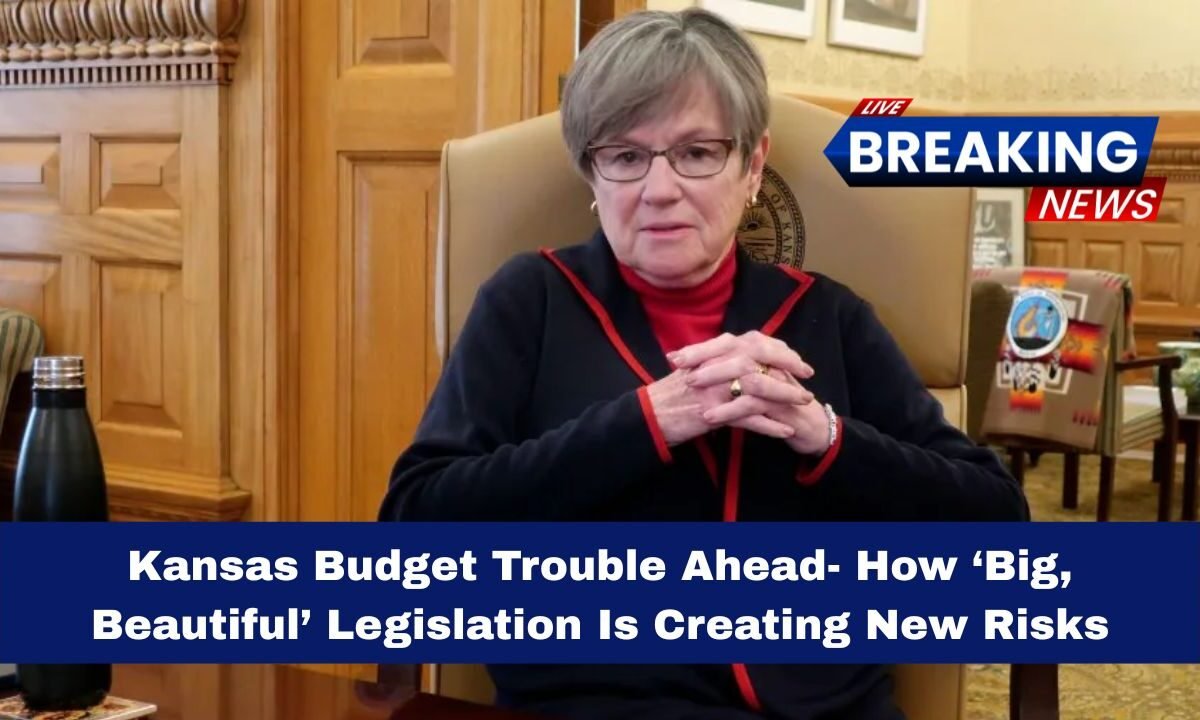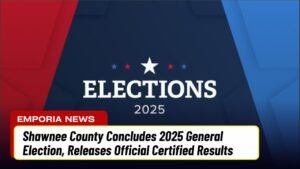Kansas is currently enjoying a period of strong finances, but new warnings show that the state may soon face serious budget pressure.
Analysts say the combination of recent tax cuts and the impact of federal “Big, Beautiful” legislation could slowly push Kansas toward a budget imbalance.
While the state still has healthy reserves today, the numbers suggest that starting around 2027, Kansas may spend more than it earns—creating long-term risks for education, public services, and taxpayers.
Kansas’ Current Financial Position
Kansas entered the 2025–2026 cycle with a large budget surplus and strong cash reserves. The state ended fiscal year 2025 with nearly $3 billion in its ending balance, a sign of financial stability.
Revenue collections in early fiscal year 2026 were also better than expected, helping Kansas maintain confidence in its short-term outlook.
However, even with today’s strong position, future projections show that spending will soon outpace revenue. This shift is happening mainly because tax cuts and federal policy changes reduce the amount of money coming into the state budget each year.
How the ‘Big, Beautiful’ Legislation Creates Trouble
The “Big, Beautiful” legislation—a large federal package that changes tax rules and expands several deductions—has major consequences for states like Kansas. When federal tax rules change, Kansas often adjusts its own tax system to match.
This means that many of the business-friendly tax breaks introduced under the new law will automatically reduce Kansas’ revenue.
Here’s how the estimated annual impact builds up starting in fiscal year 2027:
| Tax Policy Change Linked to ‘Big, Beautiful’ Law | Estimated Annual Cost to Kansas |
|---|---|
| Full expensing for business equipment | $85 million |
| Expanded deductions for research & development | $32 million |
| Changes to depreciation rules | $7 million |
| Expanded family tax credits | $6–7 million |
| Other adjustments | Remaining balance |
Overall, Kansas could lose around $145 million per year due to these changes alone.
Kansas’ Own Tax Cuts Add Even More Pressure
In addition to the federal impact, Kansas lawmakers approved several major tax cuts, including:
- Lower corporate income taxes
- Property tax reductions, including eliminating a statewide levy that previously funded education and state institutions
- Personal income tax adjustments designed to provide relief to families
While these changes are popular with taxpayers and businesses, they reduce the amount of money the state collects each year. At the same time, the state must still fund key responsibilities such as schools, road maintenance, healthcare, and public safety.
Although Kansas is spending slightly less on education due to a decline in student enrollment, the savings are not large enough to offset the long-term loss of tax revenue.
Projected Budget Gap in the Coming Years
Forecasts show a gradual widening of the gap between spending and revenue:
- Around $350–$370 million deficit expected by fiscal year 2027
- Continued shortfalls projected through 2028 and 2029
- State reserves shrinking dramatically if no action is taken
If Kansas continues at this pace, the ending balance could fall to less than half of its current amount by 2030.
Kansas may look financially strong today, but the long-term picture is becoming more complicated. With the combined effects of the “Big, Beautiful” federal legislation and state tax cuts, Kansas could see its revenue shrink beginning in 2027.
If spending continues at its current pace, the state may face a growing budget gap that puts pressure on public services and taxpayers. To stay on a stable path, leaders may need to rethink tax policies or adjust spending decisions in the years ahead.




